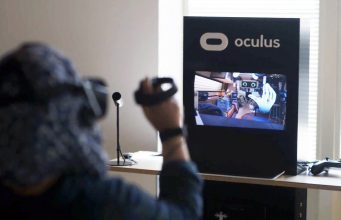
Following a two-part blog series in partnership with Crytek, where the studio shared some of its research into VR locomotion comfort, Oculus has now added 8 new experimental locomotion methods to the SDK. A recent entry on the official Oculus blog provides an introduction to the techniques.
Oculus encourages developers to explore the experimental locomotion options, noting that certain techniques that appear to detract from immersion don’t necessarily result in reducing the impact or enjoyment of VR, as players can become “more accustomed, tolerant, or acclimatized” to various locomotion comfort techniques.
There are a few variations on a ‘static world’ technique to ensure the player is always aware of a static VR world in addition to the moving one, a form of ‘cockpit view’, motion-controlled locomotion as used in Lone Echo and various ‘climbing’ games, as well as some more unusual ideas involving mismatched visual styles, and ‘artificial tilt’ that “departs from any notion of stasis”.
Here’s a list of the newly included locomotion types:
- Artificial Tilt
- Counter Optic Flow
- Unreal World Beyond Static Cockpit
- Process Reducing Relevance of Mismatch
- Ski-pole World Manipulation
- Portals into a Static World
- Window into the Moving World
- Emerging Static in the Periphery
Some of these techniques are particularly difficult to explain or imagine; Oculus has provided the source code for a test application for developers to experience each one for themselves. Check out the full blog entry here for more details.
The post Oculus Adds 8 New Experimental Locomotion Methods to SDK appeared first on Road to VR.
Ream more: https://www.roadtovr.com/oculus-adds-8-new-experimental-locomotion-methods-sdk/
No comments:
Post a Comment